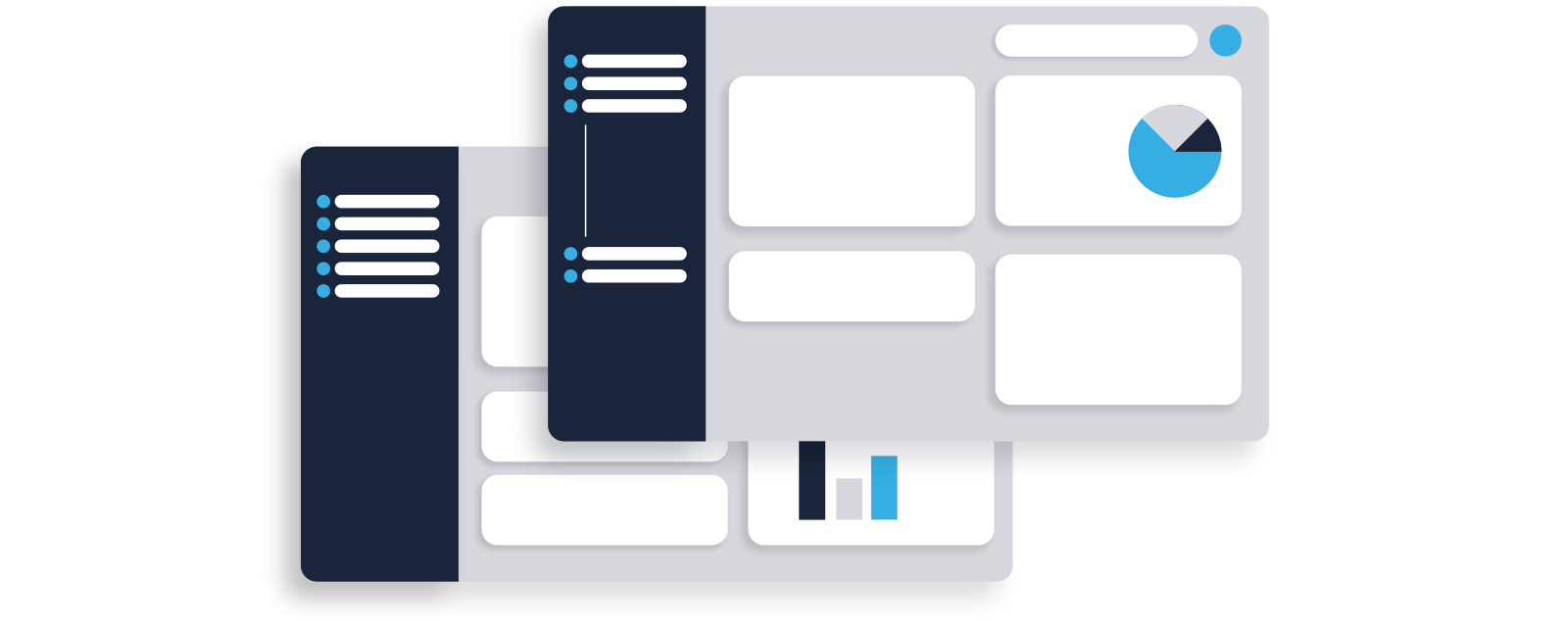Web Application Development FAQs
What Exactly is a Web Application?
A web application is effectively a software application, with data going in and out, that you access through a web browser. They are different than websites, but the line might be fuzzy for some. A simple way to think of the distinction between a website and a web application is: a website is primarily for consuming content with little to no user input/interaction, whereas a web application is primarily built around user input / interaction, and completing objectives. You could also argue that a web application is a subcategory of “websites”.
The most straightforward way to define “web application” is to ask yourself: do users log in? Can they input any data or content (e.g. comments, financial figures)? Can they complete tasks (e.g. generate invoices)? If the answer to those questions is Yes, then it’s a web application. Well-known modern web application examples include Google Analytics, Dropbox, and Basecamp.
Not sure how to evaluate a prospective digital firm? Use this checklist.
How Long Does it Take to Make a Custom Web Application with Paper Leaf?
The short answer is usually 4-6 months. The longer answer is: it depends. One web application development company might tell you 9 months, another might tell you 3 months. There are a number of variables that impact the time it takes for web application development:
- Complexity. The more complex a custom web application is, the longer it takes.
- Velocity. How fast you, the client, can work with our team – and how fast / large our project team is – impact timelines.
- Risk. If you’re launching something brand new that nobody knows about, it is generally lower risk from an end-user or business impact standpoint. However, if you’re replacing a business-critical web application and/or legacy software, it will take longer (because we want to engage users, have multiple version releases, adjust based on user feedback, and the like).
Finally, it’s important that both you and your web application development firm/agency understands that your custom web application is not a one-and-done project. It will require multiple releases, support, and iteration over time.
Why Launch a Web Application
Creating a valuable custom web app experience
Your brand has the ability to create irreplaceable value for your audience. Web applications are powerful digital assets that have far-reaching benefits for businesses and organizations of all sizes. Some of the reasons you might want to consider developing a web application include:
Web applications will position your brand as a leader.
Demonstrate your value by providing a useful tool that is customized to the exact needs of your audience. Undertaking a custom software project allows you to showcase your specialization and knowledge. And because of this, web applications can go a long way in helping to cultivate loyalty, retention, and overall positive sentiments about your brand.
They streamline and improve task processes.
By assessing workflows for top tasks, you will be able to determine what actions and features would be beneficial to transform into a fully-interactive digital experience. Similar to mobile apps, web application experiences are account-based and as such have the capacity to integrate helpful personalized content.
Web applications provide a structure for audience engagement.
Your web app has the potential to become an essential platform for task completion. With defined touchpoints surrounding key tasks, you will be able to gain insight into how your audience is actually moving through workflows. This will contribute to not only refining your custom app but it may lead to transformations in other areas of your business as well. The focused workflows and targeted tasks found within web apps give you greater control over the experience your audience has with your brand.
They provide valuable data insights.
Web applications are account-based and can be leveraged rather effectively as data-collection tools. Collecting data from how users engage with your web application will provide valuable insights into their preferences and behaviours.
Web applications increase your brand equity. If designed well – just generally making tasks smoother and more delightful – they can become tools that are fully woven into the lives of their intended audience.

Starting Your Web Application Project
Custom software with a clear business case
We are the web application development company of choice for clients that have identified an opportunity to build custom software for their brand.
The functionality of your web application will be focused on interactivity. Web applications are defined by their input – how a user will interact with the interface – the data that they create, read, update, and delete.
So when is the right time to create custom software?
First, effective web application development requires a keen understanding of audience needs. The features and functionality of your app will encourage interaction around key tasks that your audience completes on a regular basis. Once you have your idea, it’s time to evaluate if there is a software solution that already exists that you can leverage or if a custom development is required.
No matter what stage of digitization you are in, engaging in a web application project will undoubtedly reveal other opportunities to enhance the connection with your audience. We can help plan out future phases of functionality being added or integrated with – websites, mobile apps, and web applications – digital is ever-changing and iterative.
Web Application Services
Agile, Iterative, and Outcome-Focused Web Application Development
We build custom web applications for our clients, often on Laravel and React JS – a powerful, battle-tested, popular and open-source stack.
Web application research and discovery
The majority of our web application development projects start with a Discovery Phase, wherein we do the requisite research and up-front work required to identify precisely what should be built, requirements-wise, alongside the approach and effort required.
Agile web application projects
Following sign-off on the scope of work on the subsequent Design & Build Phase, our clients work with one of our dedicated project teams through completion. We work with you in a highly organized and mature agile manner, following Kanban as a methodology. Standing Progress Review meetings (usually every two weeks) are used to evaluate work-in-progress with you, allowing us to quickly reprioritize or pivot as needed.
Web application design and development
Design and development proceed in tandem, alongside continual QA testing and formalized UA testing at the culmination of the Design & Build phase. A dedicated issue resolution period follows UA and platform training, and on approval we launch your new web application. At this stage, we shift into ongoing Managed Web Services for support, hosting (if required), and ongoing feature optimization and development.
We’ve delivered high-value, transformative web applications for organizations like Elections Alberta, Campbell Scientific, FireSmart Canada, the Canadian Automobile Association (CAA), and many more.

“Their initial setup for building the project and process to determine the features we wanted and how to develop the app was really fantastic. Instead of having us come up with all the definitions of how the app should function, we focused instead on the end result we wanted to see each of the user stories be able to tell. Then, we worked backward from there on features and functionality. If we hadn’t have done that step, we wouldn’t have had outside-the-box thinking, and our app would be just a carbon-copy of our competitors’.”View Project
What You Get
Mature services & deliverables, from idea through launch.
Services & deliverables for our web application development projects, in addition to those outlined in Discovery, include:
- Prototyping
- Design Systems
- UX Design
- UI Design
- Front End Web Development
- Back End Web Development
- API Development / Integration
- CRM Integration
- Data Migration
- CI/CD
- Automated Testing
Web Application Development Expertise
Some of the tools in our web application development quiver include:
- Laravel
- ReactJS
- Docker
- Invision
- MySQL
If you’re an organization or company that has: an existing web application that needs replacing/overhaul; a valuable process that is either manual and/or paper-based; or identified a problem that no off-the-shelf software solution can fix, drop us a line – we can help. Fill out the form below, or email sales@paper-leaf.com and let’s get started!
Related Projects
The proof is in the pixels – and outcomes.
Elections Alberta Enumeration Web App
An enterprise app to register Alberta voters
Result: 1.5M Records Updated
View ProjectCAA School Zone Safety App
Improving school zone safety awareness with a multi-platform app
Result: 4,700+ infractions logged
View Project